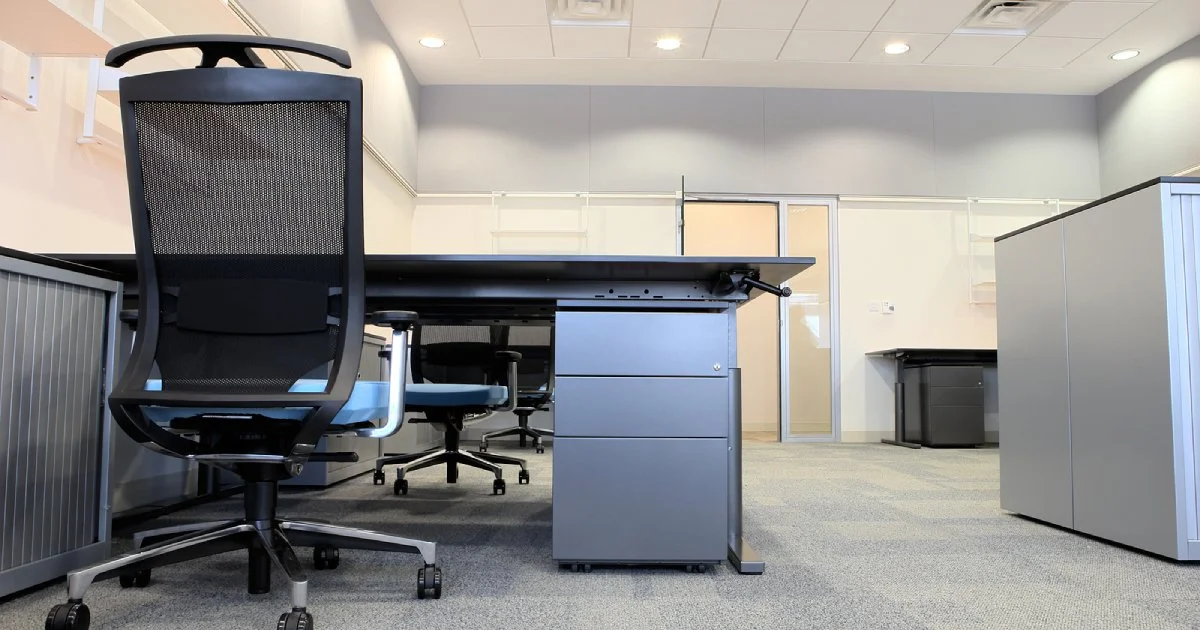Responsible Ways To Get Rid Of Unused Office Furniture
Decluttering an office often reveals a hidden challenge—what to do with outdated desks, unused chairs, broken cabinets, or furniture that no longer fits your brand image. Whether you're downsizing, upgrading, or moving to a new space, disposing of office furniture responsibly is an important step that often gets overlooked. Instead of sending everything to the landfill, there are sustainable and community-friendly alternatives that can make your office cleanout both ethical and efficient.
Donate to organisations that need it
One of the most meaningful ways to dispose of unused furniture is to donate it to charities, non-profits, or social enterprises. Many of these organisations are often in need of desks, office chairs, filing cabinets, or even meeting tables, especially when expanding or setting up new spaces on tight budgets.
Look for local schools, community centres, or charities that accept office furniture donations. Not only does this prevent your items from ending up in a landfill, but it also extends the life of your furniture while benefiting others. Ensure that the pieces you donate are still in good, usable condition—no one wants a broken swivel chair or a desk with missing drawers.
Sell items on second-hand platforms
For businesses looking to recover some of the original investment, listing furniture on second-hand marketplaces like Carousell, Gumtree or Facebook Marketplace can be a smart move. These platforms allow you to reach other small businesses, startups or home-based professionals looking for affordable options.
Selling office furniture also encourages a circular economy—keeping items in use longer and reducing demand for new production. To attract buyers, take clear photos and provide detailed descriptions of each item. Bundle similar items together for bulk offers to clear out space more efficiently.
Engage recycling and upcycling services
Not all furniture will be suitable for resale or donation. In such cases, consider engaging recycling companies that specialise in office waste. These services will dismantle furniture and separate materials—such as metal, wood, and plastic—before sending them to the appropriate recycling facilities.
Another growing trend is upcycling, where parts of old furniture are reimagined into something new. For example, wooden panels from desks can become shelving units or storage crates. By collaborating with upcyclers or creative reuse organisations, you give materials a second life and help reduce environmental waste.
Work with professional movers for bulk clear-outs
When you're clearing out an entire office or relocating to a new premise, engaging professional movers in Singapore can streamline the process. These companies often offer add-on services for furniture removal and disposal. Some can even sort items for donation, recycling, or junk collection as part of the service.
Hiring movers and packers in Singapore who understand the local disposal guidelines ensures that your items are handled appropriately and with minimal disruption to your operations. It also frees up your internal team from the heavy lifting, allowing them to focus on business continuity.
Check if your furniture supplier offers a take-back programme
Some office furniture retailers in Singapore offer take-back or trade-in schemes, particularly if you're purchasing new items from them. This model ensures that the old furniture is handled responsibly—whether it’s being refurbished, donated or recycled—and it’s a useful consideration to include in your office moving checklist.
This method not only simplifies disposal but also aligns your office revamp with sustainable procurement practices. If your supplier doesn’t offer this, ask whether they have partnerships with recycling or donation networks.
Repurpose furniture within your business
Before letting go of everything, consider whether your existing furniture can be repurposed in other departments or locations within your company. A conference table that no longer fits your main meeting room might be perfect for a breakout space. Filing cabinets that look out of place in a modern office could be relocated to your archive storage or backroom.
Taking stock of what you have and thinking creatively about its potential uses can reduce costs and waste at the same time. You may be surprised how a simple reconfiguration can breathe new life into old pieces.
Dispose of unusable items responsibly
Finally, for furniture that is too damaged or worn-out for donation, sale, or repurposing, make sure it’s disposed of through the right waste management channels. Check with NEA-licensed collectors in Singapore to ensure safe and legal disposal. Avoid illegal dumping or relying on unverified hauliers, as this can result in fines or environmental harm.
Some municipal services and licensed disposal vendors also offer e-waste collection if you're removing furniture that comes with embedded electronics like adjustable desks or power-charging stations. Disposing of these responsibly prevents toxic components from contaminating the environment.
Conclusion
Saying goodbye to old office furniture doesn’t mean contributing to landfill waste. With a bit of planning, you can turn your furniture clean-out into an opportunity to support the community, reduce environmental impact, and even save on operational costs. Whether you choose to donate, sell, repurpose or recycle, responsible disposal is a small but meaningful way to demonstrate your company’s commitment to sustainability.
If you're preparing for an office move or large-scale clearance, consider partnering with Reddot Movers, who can guide you through a smooth and responsible transition.

